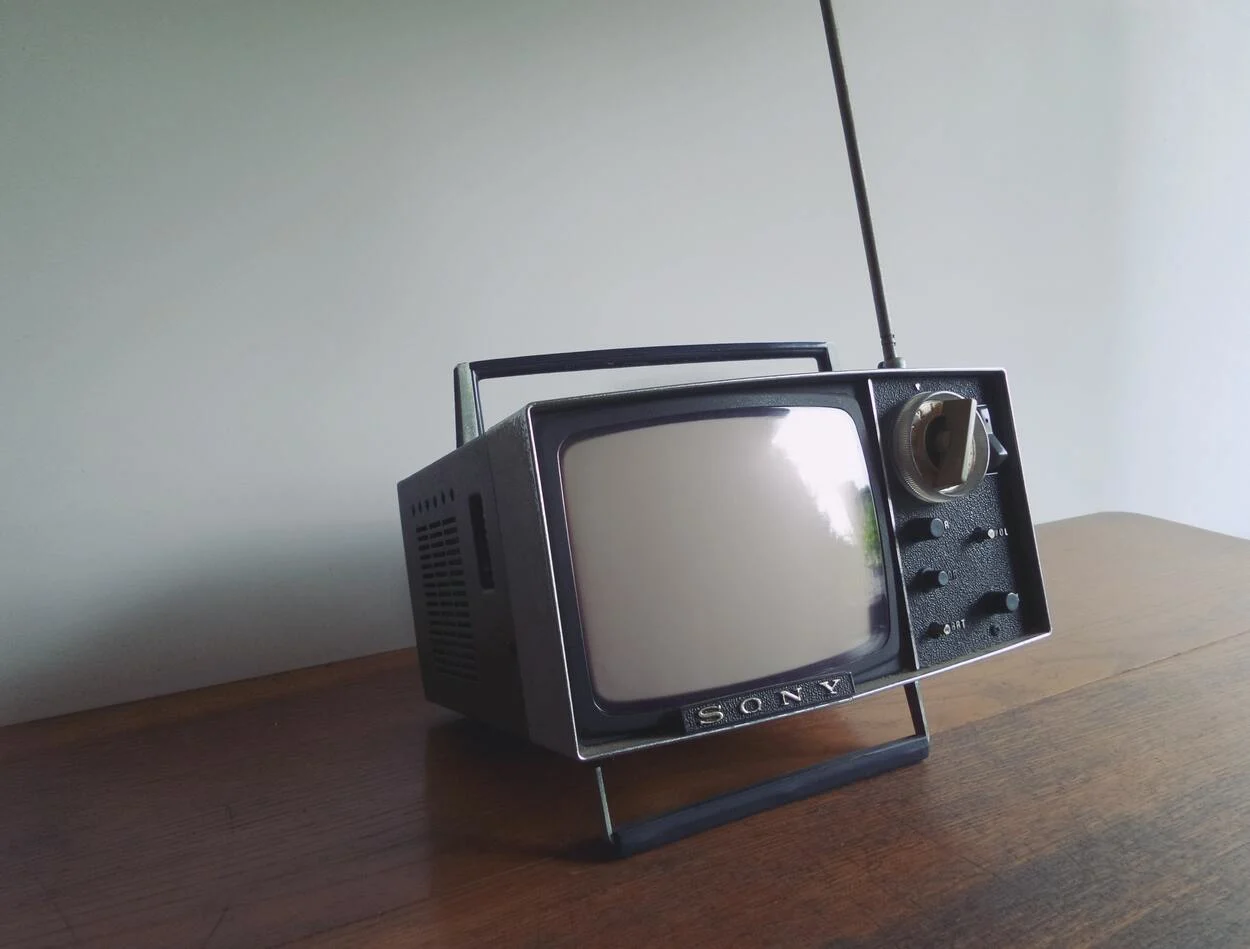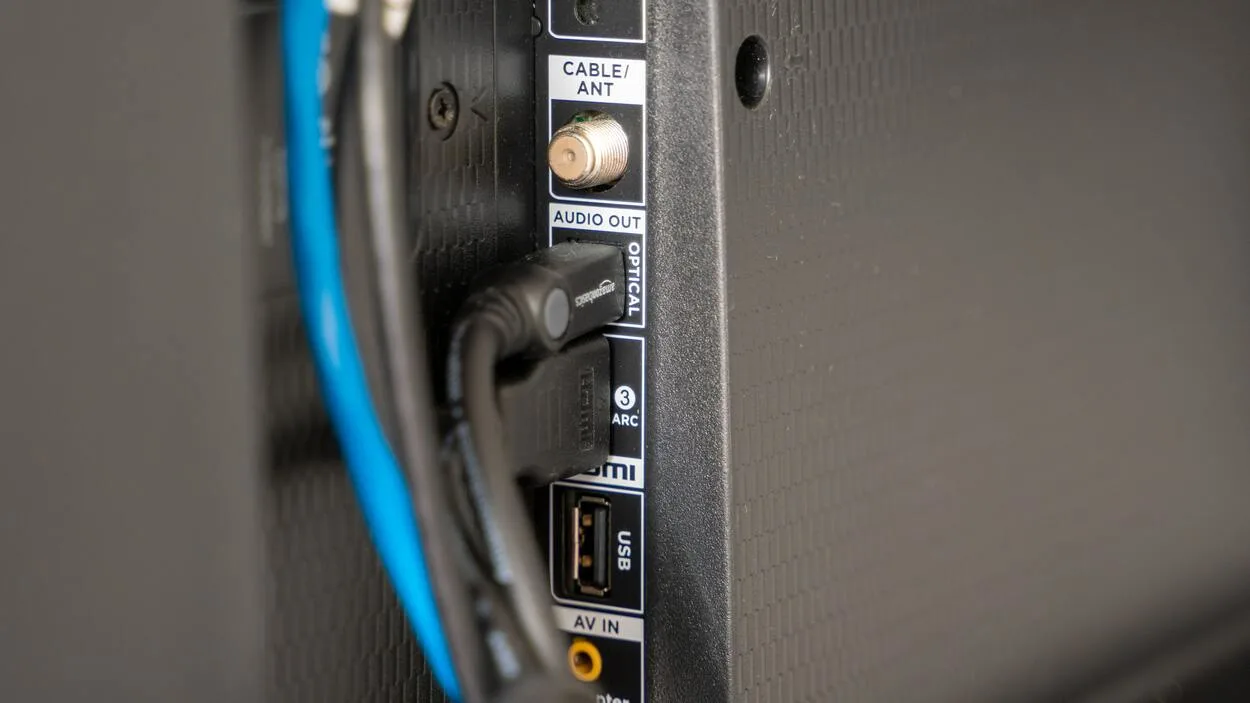In this article, I’ll discuss the other causes that can silence your TV since we’re already aware that the volume isn’t muted. Just make sure your volume isn’t too loud.
After reading this article, you will be able to resolve the TV audio issue you are experiencing.
| What to do? | Explanation |
| Restart the TV. | A power cycle is a primary procedure that resolves the frequent problems with your Smart TV. Turning your TV off and back on again is one of the first things you should do if the volume isn’t working or is stuck. |
| Verify the audio settings. | Make sure that the TV’s audio input settings are on. |
| Make sure the HDMI cable is connected. | It’s possible that the HDMI cable you’re using to link your set-top box to your TV is defective or connected loosely. |
| Switch to another channel. | Switch the channel to confirm that the sound is also missing from there. |
| Check the mainboard components. | If any of the mainboard components are broken, it will undoubtedly affect the TV’s ability to produce sound. |
| Contact your TV’s customer service. | If you’re still having problems, speak with your TV manufacturer for additional assistance. |
By continuing to use this website you agree to our Terms of Use. If you don't agree to our Terms, you are not allowed to continue using this website.
How to restore sound on a TV?
While smart TVs share many capabilities, several brands have somewhat different audio settings and methods for configuring them.
But the advice provided below ought to assist you in reclaiming the sound of your gadget.
Here are some tested solutions to aid with problem-solving:
1. Restart the TV.
A power cycle is a fundamental action that fixes your Smart TV’s common issues. One of the first things you should do if your TV’s volume isn’t functioning or is stuck is to power it off and on again.
If you’re experiencing any volume issues with your TV, a quick and effective solution is to unplug it from the power source for approximately 10-15 minutes before plugging it back in. Once the TV has rebooted, simply check to see if the volume problem has been resolved.

Simply do the following steps to restart your TV:
- For a few seconds, press and hold the TV’s Power button.
- Your TV’s associated gadgets should be disconnected.
- Remove the TV plug from the wall.
- Wait for it to reset after plugging it in and restarting the power.
This may appear extremely straightforward, yet it has been successful countless times. This is because a reboot allows your TV’s settings to be updated. And the problem could be resolved after you turn it back on.
2. Verify the audible settings on your TV.
It’s time to review your audio input settings now.
What does audio input mean? Simply, audio input is what delivers audio signals to a device, such as your TV. Additionally, audio problems occur when the audio input settings on your TV are incorrect.
Whenever anyone pushes the incorrect button on the Television remote, it’s one of the most frequent ways that your audio settings are compromised. For illustration, if you or a family member inadvertently pushes “AUX.”
The audio input on your TV will switch to AUX at that point. This means that something needs to be plugged into the AUX port for the sound to play.
You may run a sound test on a Samsung Tv to see if the audio settings are correct.
Here’s how to do it:
- Select “Support” under Settings.
- After selecting “Start Sound Test,” tap on “Self Diagnosis.”
If there’s a problem with your audio settings, the test will reveal it to you. And if there is, you may perform the following to restore your sound settings:
- Navigate to Settings and then choose “Sound.”
- Decide on “Expert Settings.
- Lastly, select “Reset Sound.”
Watch this video to learn how to reset the audio settings on an Android TV:

3. Make sure the HDMI cable is connected. (For TV having Input Using HDMI Cables)
Your HDMI cable may be the cause of any sound troubles you are experiencing with your TV.
Why Should I Check My HDMI Cable?
Any connected external device’s sound and video are sent using HDMI wires.
There’s a possibility that the HDMI cable you are using to connect your set-top box to your TV is either broken or has a loose connection. Ensure that both ends of the cable are securely inserted. A loose connection can occasionally cause sound issues.
To fix this, disconnect your TV’s HDMI cable and check to see if there are any obvious signs of damage. Reconnect the HDMI cable and check whether the issue has been fixed and if everything appears in order.

4. Switch to another channel.
What if the issue isn’t with your speakers, TV, or input audio settings? Maybe it can be the station you’re watching.
Simply changing the channel will allow you to verify this. Afterward, keep an eye out for any sounds.
5. Check the Mainboard Components
The capacity of the TV to create sound will probably be impacted if any of the mainboard components malfunction. The motherboard, often known as the mainboard, is similar to the spine of a television set.
Even though it can be challenging to identify a problem with the mainboard right away, it’s advised to purchase the necessary parts if it is confirmed to be the cause.
However, this kind of repair typically falls outside the purview of a layperson’s knowledge and necessitates professional assistance. The TV sound would undoubtedly improve as a result.
6. Contact your TV’s customer service.
Contact your TV maker for more help if you need it or if you’re still having issues. Possess a Warranty? To determine whether it will be guaranteed, look at the warranty card that came with your TV and read its Terms and Conditions.
Customer service frequently assists in making that evident. Ask them if you locate chat help for your TV customer service.
On your TV brand’s website, or at the very least, they will have a support email address or phone number where you can contact them, you can locate customer service information.
If you have a warranty, everything is ok.
Frequently Asked Questions (FAQS)
Why is my TV volume so low?
Answer: On the TV, check the Speakers option. Ensure that TV Speakers are chosen. The TV’s volume should be raised. Increase the set-top box’s volume if you are using one with volume control.
Why is one channel on my television silent?
Answer: There might be a muffled sound. To restore sound, try hitting the volume up button.
Examine the other channels to see whether it is the same. If you search for only one channel with no sound, there’s a chance that the network’s signal is weak or that there are some technical problems.
How can I disable the Headphone mode on my TV?
Answer: Press the HOME button on the included remote control. Select Headphone/Audio out under Settings.
Why is the music louder than the talking on my TV?
The quality of most home sound systems can cause TV dialogue to be lower than music.
This is because most speakers tend to amplify high frequencies that are often used in songs and music while the human voice occupies a lower range than can be hard for standard speakers to pick up.
Conclusion
- Television holds an important role in our lives, and as you know, it’s a part of technology. So sometimes, a default might appear in it.
- Your TV’s volume may not be functioning correctly for a variety of possible causes. We need to know the other causes since we’re already aware that the volume isn’t muted.
- Any form of TV, including LCD, Plasma, LED, OLED, Smart TVs, 8K, 4K, and QLED, can lack sound. Most 32″ to 110″ TV models manufactured after 2008 are repairable.
- The aforementioned are only a few quick fixes to look for while troubleshooting and potential solutions to sound problems on your television.
- Contact your TV maker for more help if you need it or if you’re still having issues with your Android TV.
Other Articles:
- How Much Is Alexa at Walmart? (Revealed)
- Is One Airpod Louder Than The Other? (Reasons With Solutions)
- What Is The Temperature Of The CPU While Gaming?
- Sonos Roam Bluetooth Pairing (In-depth Explanation)
Click here to view the Visual Story Version of this Article.

